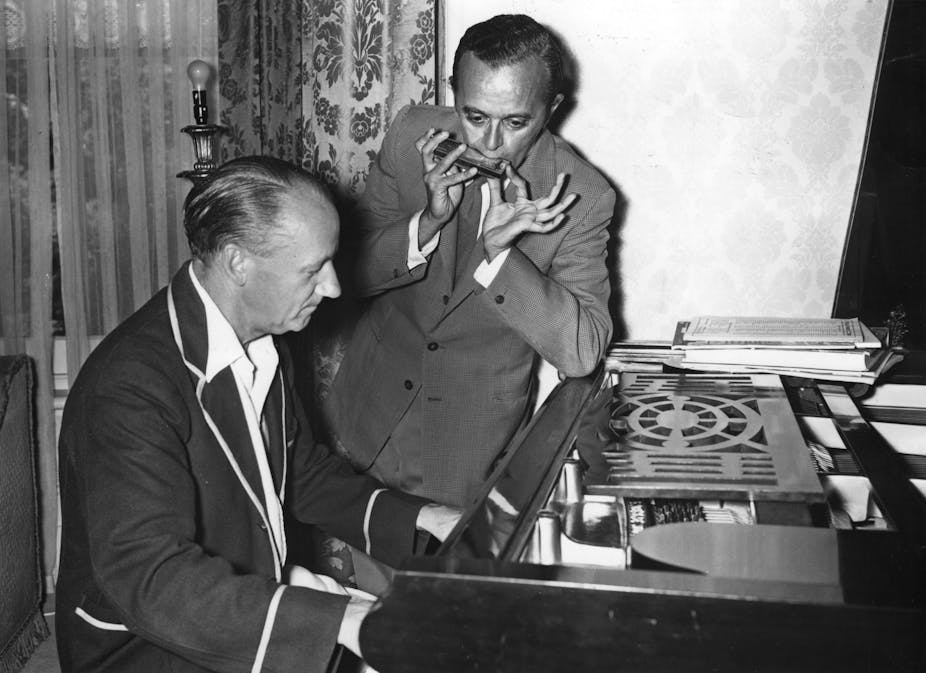The Australian Dictionary of Biography (ADB) is Australia’s largest and longest-running social sciences and humanities project. Set up in 1957, it has been publishing short accounts of significant and representative Australian lives since 1966. Some 19 volumes have been produced, with the most recent – covering people who died between 1981 and 1990 and whose surnames begin with the letters L-Z – appearing in 2012.
The ADB has been hailed as one of Australia’s greatest resources for researchers, a valuable tool for school students, and a fascinating read for anyone interested in Australian history and biography. It is the story of Australia writ through the lives of some of the dynamic, engaging, eccentric, and even notorious people who have made and lived that history.
So how is this amazing collection of life stories compiled? It’s a detailed process of research, collaboration, and constant revision.
Biography online
In 2008, the ADB went online, making its 12,000-plus concise biographies available for free to all.

Since then, it has been complemented by several companion websites, together aimed at expanding the project’s reach to encompass many more Australian lives. People Australia is the umbrella website for this expansion, and brings together a range of specialised websites – Women Australia, Indigenous Australia, and Labour Australia – each focused on groups who have not been well represented in the ADB itself, particularly the early volumes.
Obituaries Australia has the ambitious goal of one day containing obituaries for all Australians, or at least all those who have received one.
Many countries have national biographical dictionaries – Britain, Canada, New Zealand, and the United States all have their own – and each has faced the challenges involved in producing such large reference works.
None, however, have gone so far as the ADB in enhancing their online environments, with additional websites, online research tools, and innovative data visualisations. Nor are most as representative as the ADB, which includes shearers as well as prime ministers, dingo trappers as well as governors, and even a self-proclaimed witch.
Entries in the ADB are written by independent volunteer authors commissioned to write about individuals selected for inclusion by state and territory working parties. Authors write to a word limit set by the working party, ranging from 500 to 5000 or more. In-house editorial staff edit and fact-check entries before they are published in print and online.
Writing concise biographies is no easy task.
ADB entries have to combine the requirements of a reference work, such as including a range of specified details and maintaining a certain uniformity of style, with the art of biography, which is often at its best when a spark of creativity allows a sense of the subject’s personality to shine through. The ADB and its editors seek to balance these demands.

Some aspects of articles are formulaic, and follow a pattern – giving the details of a person’s birth, marriage(s), and death, for instance, or including accurate information about their educational attainments and official positions.
Editors also look to offer a “word picture” of the subject, capturing their presence and personality, and perhaps providing an anecdote or two to illuminate their character and motivation.
Long and short entries present opposite challenges. The trick of a longer entry on someone well-known (like a prime minister), where the life is well-documented and rich accounts have already been written, is to distill the most significant elements and narrate them in a fresh way.
A short entry about someone less well-known is a different kind of test. Rabbiters and rugby coaches, for example, do not always leave many personal records, so the difficulty can be to hunt down missing facts. A person who performed a heroic rescue as a youth might then have vanished from sight, requiring a slow process of discovery to tell a full story of their life.
Selecting material is an art too. If a subject became a famous singer, their love of the school choir should probably be included. If they became a corporate tycoon, their first place in high-school English might not be so relevant.
Authors and editors face a difficult task identifying the most significant events, awards, actions, or activities in a subject’s life. Should we include these prizes, or just this one? Should we mention a brief but inspiring trip, or is there no space? How do we convey a sense of someone in just a sentence or two?
Another big challenge is the contentious or notorious life.
Such lives demand inclusion, for they too have shaped the fabric of Australian life. But navigating the contested waters of controversy and conflicting evidence so as to fairly evaluate lives and assess their significance is enough to keep authors (and sometimes editors) awake at night.
Even more tricky can be the case of new evidence or revised opinions. To address this problem, the ADB hopes to attract resources to revise and rewrite earlier volumes, which were written when less evidence was available, and which have not always kept up with changing times in their treatment of (for example) women, Indigenous Australians, or gay Australians.
As a whole, the Australian Dictionary of Biography paints a rich picture of Australian life. Few users would read from cover to cover, especially with the dictionary now online, instead dipping in and out of a fascinating and varied past.
For editors, the parade of lives across their desks is an ever-absorbing insight into all areas of Australia’s past – from politics to pastoralism, sport to singing, military service to medical research.
The ADB grows and changes as Australia does, a reflection, a record, and a story of the nation.
The next batch of lives in the ADB, those who died in 1991, will be published directly online in December.

